

Balancing & Climbing: The Importance of Outdoor Risky Play in Spring
As spring unfolds and nature invites children to explore, climb, and balance, it’s the perfect season to embrace outdoor risky play. While the term risky play may sound intimidating, it refers to challenging and adventurous activities that help children develop confidence, resilience, and essential motor skills.
From climbing trees to balancing on logs, outdoor play-based learning fosters physical strength, problem-solving, and social-emotional growth. By providing opportunities for balancing and climbing, children learn to assess risks, build coordination, and engage in active exploration—all while having fun in the great outdoors!
What is Risky Play?
Risky play is challenging, open-ended, and often adventurous play that allows children to test their limits in a safe and supervised way. This type of play includes:
- Climbing – Scaling trees, playground structures, or rock formations
- Balancing – Walking along logs, stepping stones, or slacklines
- Jumping – Leaping from stumps or navigating natural obstacles
- Navigating Heights – Exploring playground towers or climbing boulders
While it may involve an element of uncertainty, risky play is a crucial part of early childhood development and helps children gain essential life skills.
The Benefits of Risky Play in Spring
Springtime provides the perfect conditions for outdoor risky play. As the weather warms and nature comes to life, children can fully engage in active play that strengthens both their bodies and minds.
Develops Gross Motor Skills & Physical Strength
Balancing and climbing require core strength, coordination, and endurance. Engaging in physical outdoor play helps children:
- Strengthen muscles and balance through climbing
- Improve spatial awareness and movement control
- Develop hand-eye coordination as they grip and navigate structures
By challenging their physical abilities, children build the foundation for activities like running, biking, and even handwriting later on.
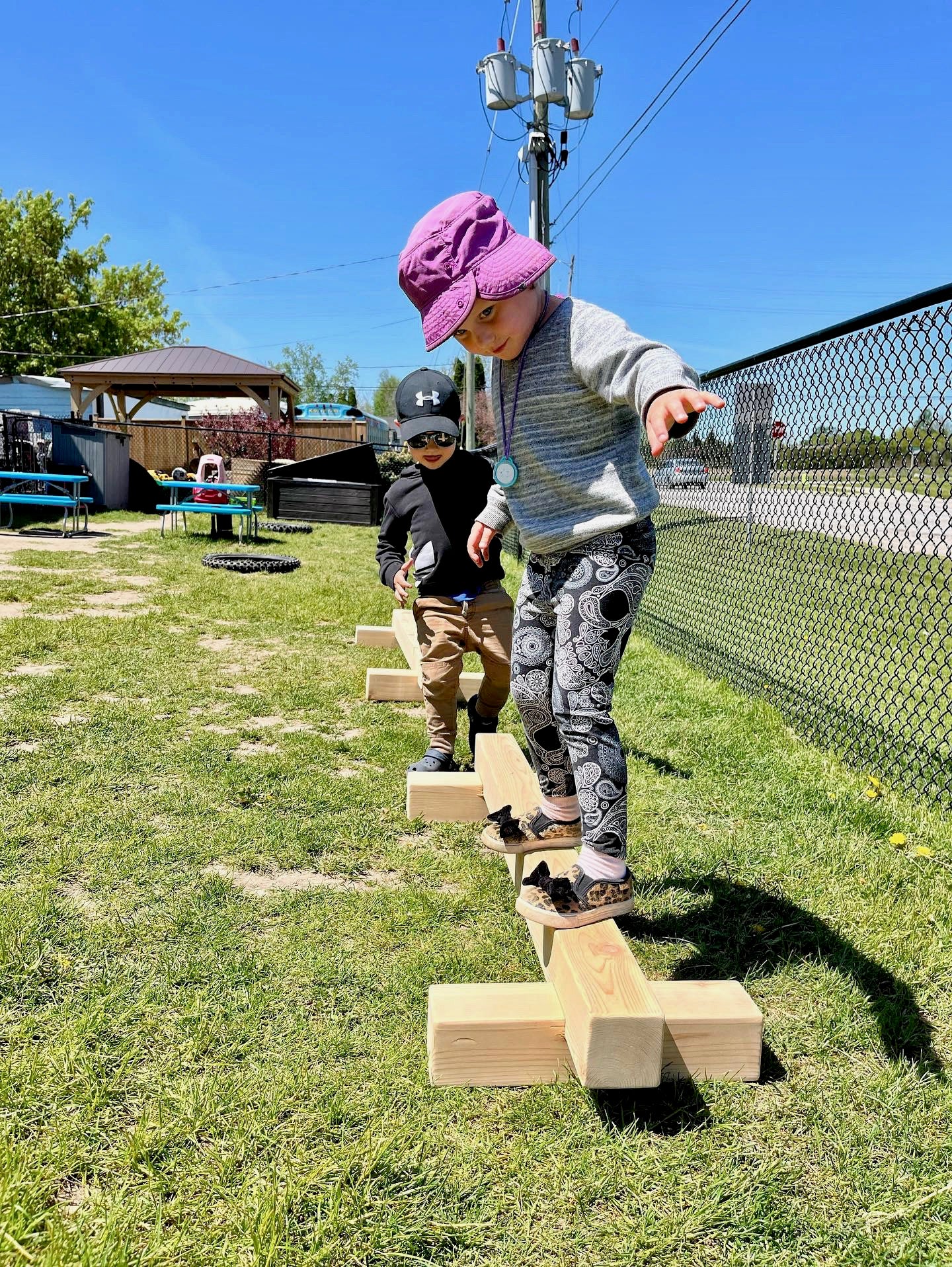

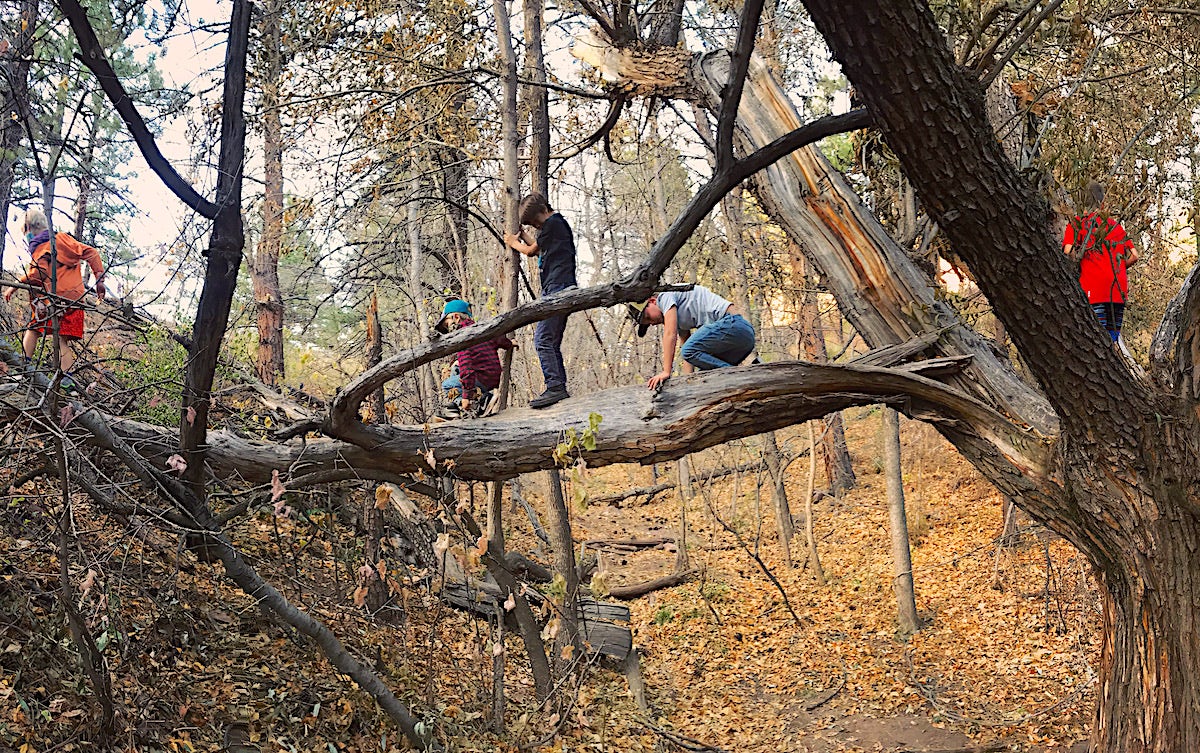

Encourages Problem-Solving & Decision-Making
Risky play requires children to assess challenges, make quick decisions, and adjust their actions. When climbing or balancing, they must:
- Decide how high to climb or where to step next
- Assess different surfaces and their stability
- Problem-solve if they get stuck or need to find a different route
This type of real-world problem-solving builds resilience, adaptability, and independent thinking.
Builds Confidence & Emotional Regulation
Risky play allows children to push their own boundaries at a pace that feels comfortable for them. This helps them:
- Build self-confidence as they master new skills
- Learn to manage fear and work through challenges
- Regulate emotions by navigating excitement, hesitation, and achievement
When children successfully climb a tree or balance on a log, they experience a sense of accomplishment that boosts self-esteem.
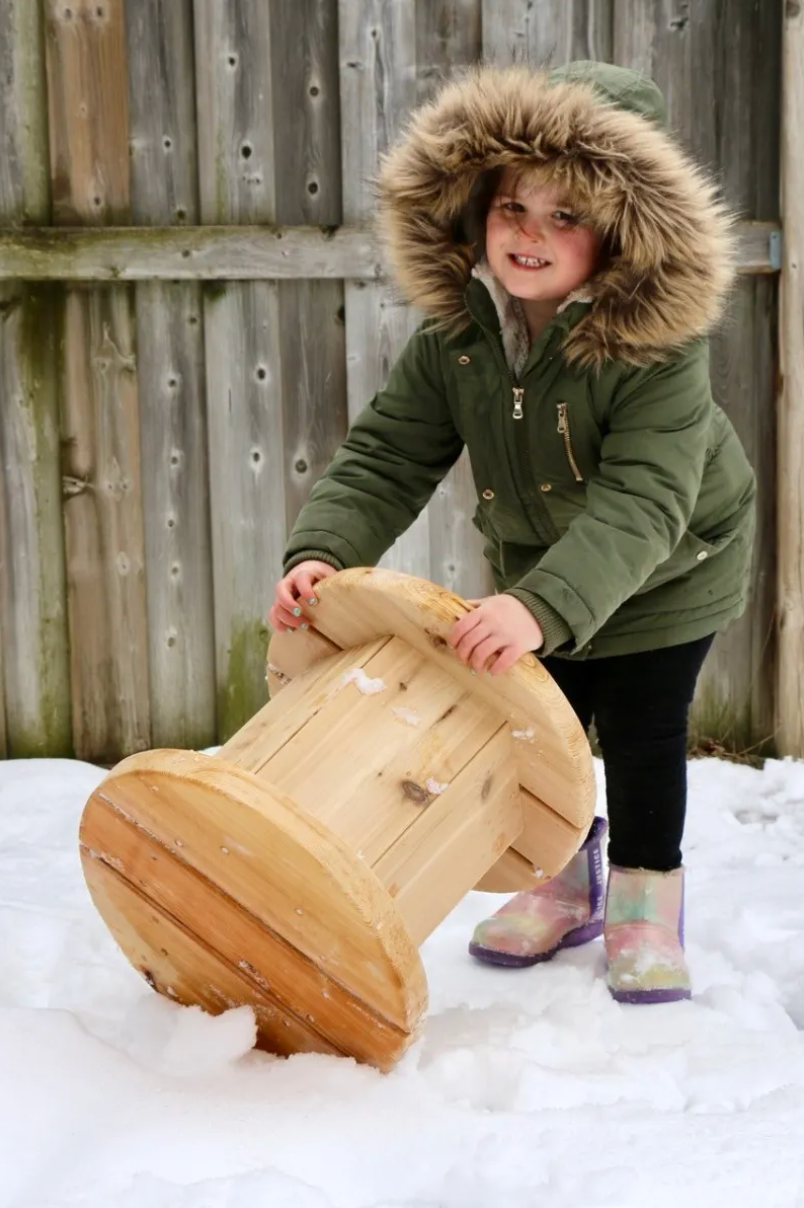

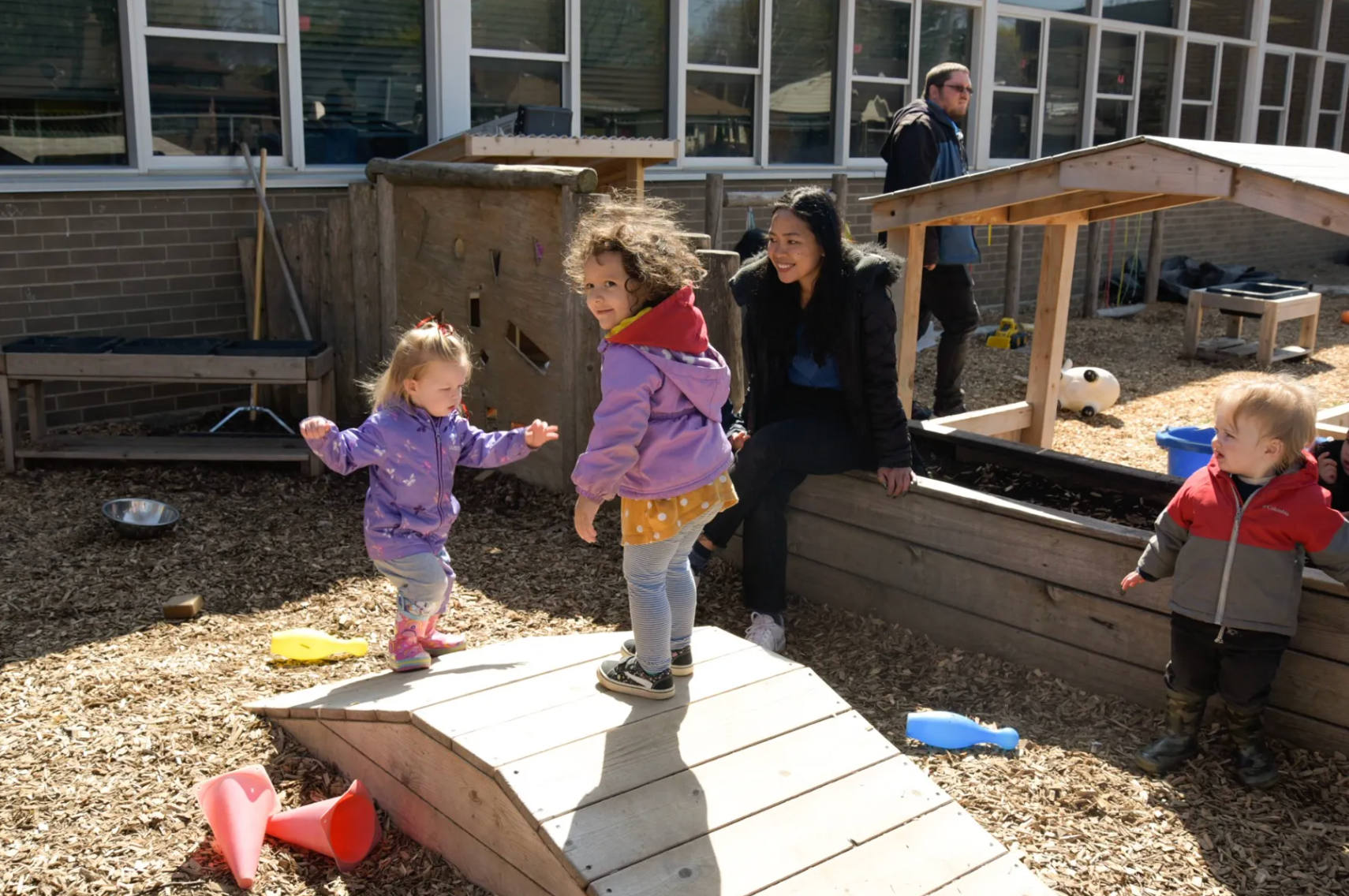

Fosters Social Skills & Cooperation
Outdoor risky play often involves group exploration and teamwork, helping children develop essential social-emotional skills such as:
- Taking turns and sharing space
- Encouraging peers and supporting friends
- Respecting each other’s comfort levels with risk
Whether working together to navigate a fallen tree or cheering on a friend attempting a big jump, children learn collaboration, empathy, and leadership.
Strengthens Connection to Nature
Spending time balancing and climbing in natural environments fosters a deeper appreciation for nature. Children engage with the textures, landscapes, and elements around them, which helps:
- Develop sensory awareness (feeling bark, rocks, and grass)
- Encourage mindfulness and observation (watching birds, insects, and plants)
- Promote environmental stewardship (learning to care for natural spaces)
Spring is an ideal season to explore natural landscapes, as children can experience changing weather, growing plants, and active wildlife.
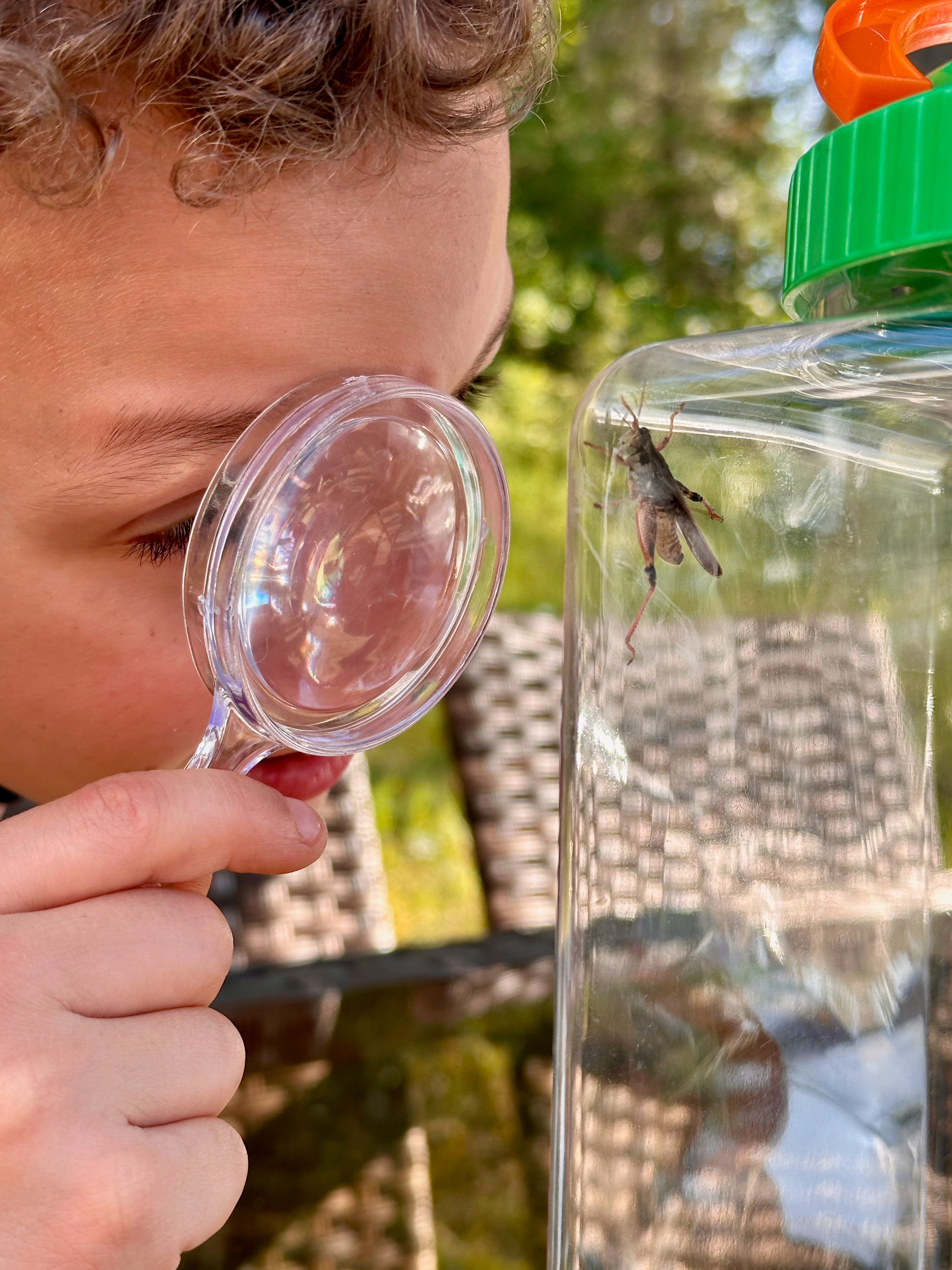

Ways to Encourage Risky Play in Outdoor Learning Spaces
Educators and parents can create safe and engaging outdoor environments that support risk-taking in play. Here’s how:
- Provide Natural Climbing Opportunities – Allow access to low tree branches, rock formations, or stumps.
- Incorporate Balance Challenges – Use logs, stepping stones, and rope courses to promote stability and coordination.
- Allow Free Play on Playgrounds – Give children time to climb, jump, and explore different heights.
- Offer Loose Parts for Creative Risk-Taking – Use planks, crates, and wooden beams to encourage building and balancing.
- Supervise with a "Risk-Benefit" Approach – Instead of saying “be careful,” use phrases like “take your time” or “where will you put your foot next?” to support decision-making.
Addressing Common Concerns About Risky Play
It’s natural for adults to feel cautious about allowing children to take risks, but research supports the benefits of controlled risk-taking in childhood. Here’s how to balance safety and exploration:
- Assess the Environment – Ensure the play area is age-appropriate and free of serious hazards.
- Encourage, Don’t Rescue – Support children as they navigate challenges, but let them work through the problem independently.
- Trust Children’s Abilities – Kids are capable and intuitive—they will often self-regulate based on their comfort level.
- Teach Safe Risk-Taking – Model safe climbing techniques, spotting strategies, and landing positions.
By allowing calculated risks, children develop self-confidence, independence, and physical literacy that will benefit them throughout life.
Embracing Risky Play This Spring
Balancing and climbing are essential elements of childhood exploration, allowing children to develop strength, confidence, and problem-solving skills. Spring is the perfect time to embrace outdoor risky play in natural settings, playgrounds, and outdoor classrooms.
By encouraging children to navigate heights, test their limits, and experience the thrill of active play, we help them build resilience, independence, and a lifelong love for outdoor adventure.
So this season, let them climb, balance, and explore—because every wobble, step, and leap is a lesson in confidence and growth!

